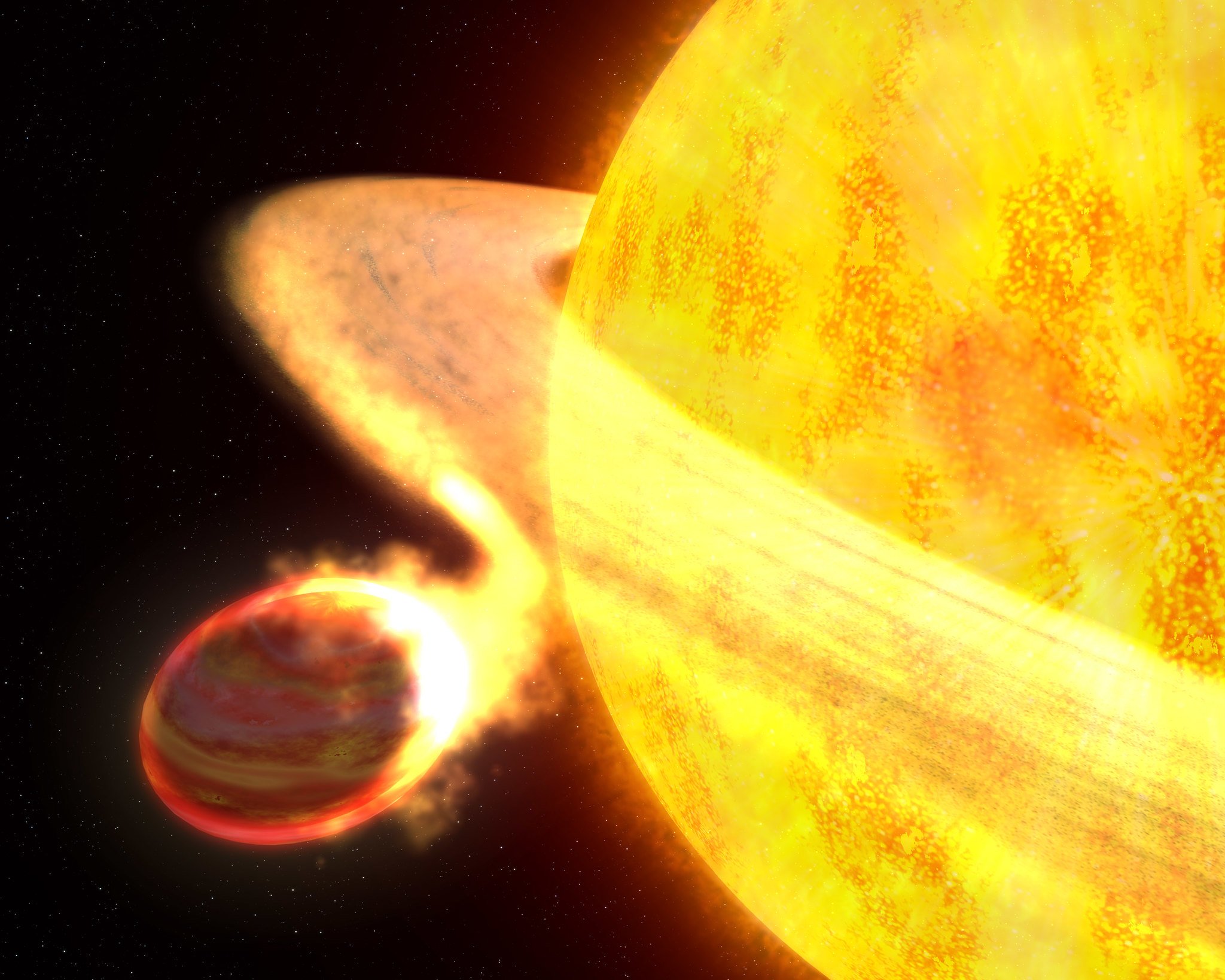
Astronomers have recently witnessed a rare occurrence in the universe: a star devouring one of its own planets.
Scientists think that this event provides us with a glimpse of what might happen to our planet Earth approximately 5 billion years from now when it could potentially be swallowed up by the ever-expanding sun.
The planet was located 13,000 light-years away from Earth and was devoured by its parent star, which had quickly grown to thousands of times its original size. The destruction of the planet was observed by astronomers, who noted a distinctive, bright white light that increased in intensity over a 10-day period.
To gain a better understanding of the event, the scientists analyzed the light produced during the outburst, as well as the chemical composition of the material expelled by the star.
From these observations, they determined that the planet that was devoured was a gas giant, at least 30 times larger than Earth. The findings of this rare and remarkable observation were published on May 3 in the scientific journal Nature.
‘We are seeing the future of the Earth’
The lead author of the study Kishalay De, a postdoctoral student at the Kavli Institute for Astrophysics and Space Research at the Massachusetts Institute of Technology, said that we could be catching a glimpse of what may happen to Earth in the future.
De states that if another civilization was observing us from a distance of 10,000 light-years away while the sun was engulfing the Earth, they would see the sun suddenly brighten as it ejects some material, then form dust around it before settling back to what it was.
Stars, like our sun, produce energy by fusing hydrogen atoms into helium. However, once they run out of hydrogen fuel, they start fusing helium, which causes a massive increase in energy output.
This leads to stars swelling hundreds or even thousands of times their original size and transforming into red giants, which swallow up their inner planets, according to the study.
Astronomers in Chile have observed the first evidence of a dying Sun-like star engulfing a planet. The event was seen as a long, low-energy outburst from the star caused by a planet skimming along the star’s surface. This may be Earth's fate 5 billion years from now. pic.twitter.com/NCBGyGKCw3
— Peter Bond (@PeterBondSpace) May 5, 2023
Use of Zwicky Transient Facility
The astronomers detected the unusual burst of light using the Zwicky Transient Facility, which is used to search the sky for sudden changes in the brightness of stars. This survey is conducted by the Palomar Observatory, which is part of the California Institute of Technology.
The astronomers named the flash ZTF SLRN-2020, and it started as a bright beam of light that increased in intensity by 100 times over a period of 10 days. The light remained visible for around 100 days before it eventually faded away.
To understand the cause of this event, the scientists used the Keck Observatory located in Hawaii to analyze the light and determine its chemical composition. They used a tool called a spectrograph to separate the light into its individual wavelengths.
At first, the researchers thought that they had discovered a nova, which is a binary star system that appears brighter when one star, typically a white dwarf, steals fire from its companion red giant star.
However, the chemical composition of the light did not match that of a nova, according to Live Science.
See all the latest news from Greece and the world at Greekreporter.com. Contact our newsroom to report an update or send your story, photos and videos. Follow GR on Google News and subscribe here to our daily email!



